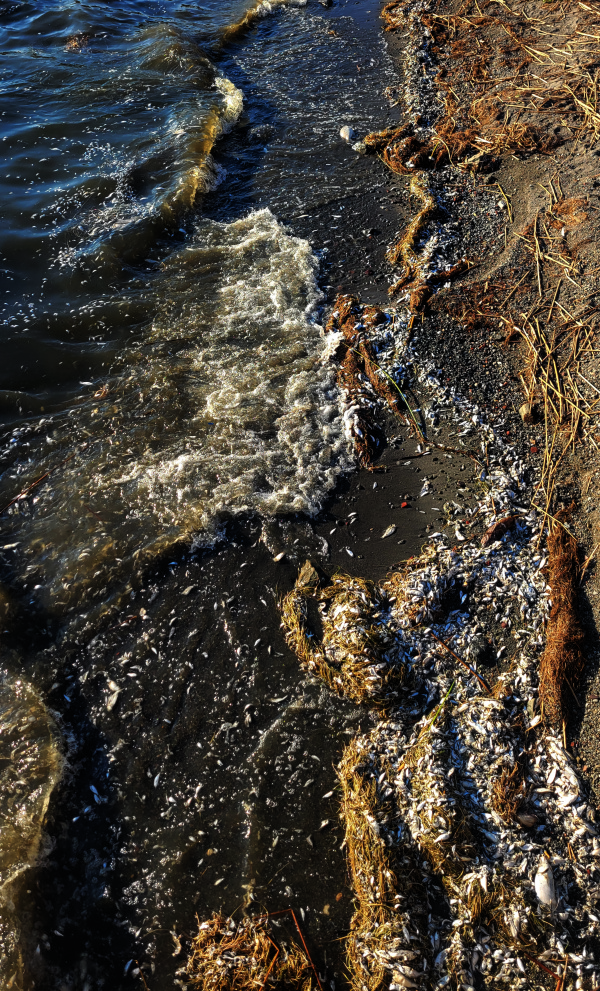
LAKE COUNTY, Calif. — A fish dieoff that’s impacting several species of fish is taking place in Clear Lake.
The dieoff may have started as early as Sept. 3, according to the Clear Lake Water Quality Facebook page, run by the Big Valley Band of Pomo Indians.
“It appears to be mostly a shad die off but hitch, catfish, blue gill, crappie and bass have been noted as well,” a post on the page explained.
At one site, at Lucerne Harbor Park, several species of fish — from threadfin shad to bass and carp — have been found washing up on the beach in large numbers.
The discovery on Monday of a dead 7-foot-long white sturgeon in Buckingham — a fish whose natural range does not include Clear Lake — coincides with the dieoff, which wildlife officials are attributing to oxygen levels.
“Fish die-offs in Clear Lake are pretty common, especially this time of year,” California Department of Fish and Wildlife spokesman Peter Tira told Lake County News.
“This particular situation is caused by a lack of dissolved oxygen in the water, a scenario resulting from the recent heat, a lack of wind, no seasonal turnover yet in the water column mixing surface water with bottom water, which replenishes the entire water column with oxygen, and the lack of photosynthesis taking place due to recent cloud cover (so aquatic plants not producing oxygen like they otherwise would),” Tira explained in an email.
Tira said the threadfin shad die-off “then compounds the situation with the resulting bacteria and decomposition process consuming even more dissolved oxygen from the water.”
He said threadfin shad “are a bit more delicate and less hardy of a species than other fish in Clear Lake,” and thus the shad are particularly susceptible to die-offs as a result of low dissolved oxygen levels.
While CDFW attributed the die-off to lack of dissolved oxygen, the Clear Lake Water Quality Facebook page noted that measurements the tribe took of dissolved oxygen concentrations have been below 5 mg/L, “which is the standard for the lake, and protective of fish.”
“Dissolved oxygen is often low in the summertime because warm water does not hold onto oxygen as easily as cold water, and when weeds, cyanobacteria or algae die off, dissolved oxygen also drops. The blooms haven't been as extensive this summer as in previous summers,” the post explained.
Those who wish to help document the dieoff are invited to report it to iNaturalist. It will then become part of the Clear Lake Fish Kill Monitoring Project that Big Valley Rancheria established in 2021.
Email Elizabeth Larson at

 How to resolve AdBlock issue?
How to resolve AdBlock issue? 



